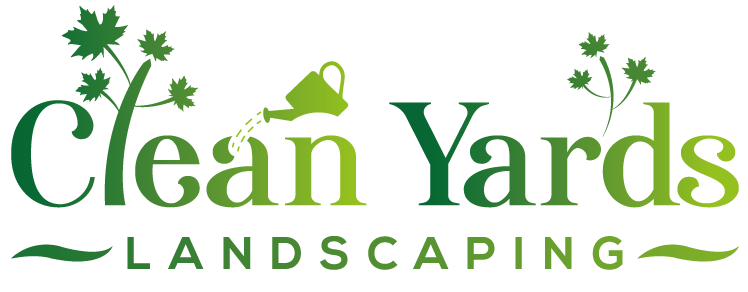Fix Embrun Garden Pest Damage: Fall Recovery Guide
Dealing with pest damage? Get your garden back in shape before winter!
Request Your Cleanup QuoteQuick Fall Pest Recovery Tips:
- Identify common late-season pests (grubs, voles, rabbits).
- Clean up fallen leaves and dead plant debris thoroughly.
- Prune damaged stems and repair lawn patches (rake, top dress, seed).
- Protect young trees/shrubs with guards against winter gnawing.
- Amend soil with compost for healthier plants next spring.
Introduction: Uh Oh, Pests Had a Party in Your Embrun Garden? Let's Clean Up!
Well, Embrun gardeners, looks like summer ended with a bang... or maybe a *chomp*? If you've walked out to your yard lately, perhaps admiring the early fall colours, only to find your beautiful plants looking a bit, well, *munched on*, you're definitely not alone. It seems while we were enjoying the last days of warmth, some uninvited critters decided your garden was *the* five-star, all-you-can-eat buffet in the Ottawa region! We're hearing similar stories from folks in nearby Russell and Metcalfe too.
From skeletonized leaves on your favourite shrubs to mysterious holes digging up your lawn, the evidence of this pest party is often clear and frankly, a bit frustrating after all your hard gardening work. But don't throw in the trowel just yet! Fall is actually the *perfect* time for some serious garden recovery and landscaping cleanup. Let's roll up our sleeves, identify the party crashers, and put a plan in place to tidy up the damage before winter truly sets in. Ready to reclaim your garden?
Rogues' Gallery: Identifying Common Late-Season Pests & Their Damage in Ottawa
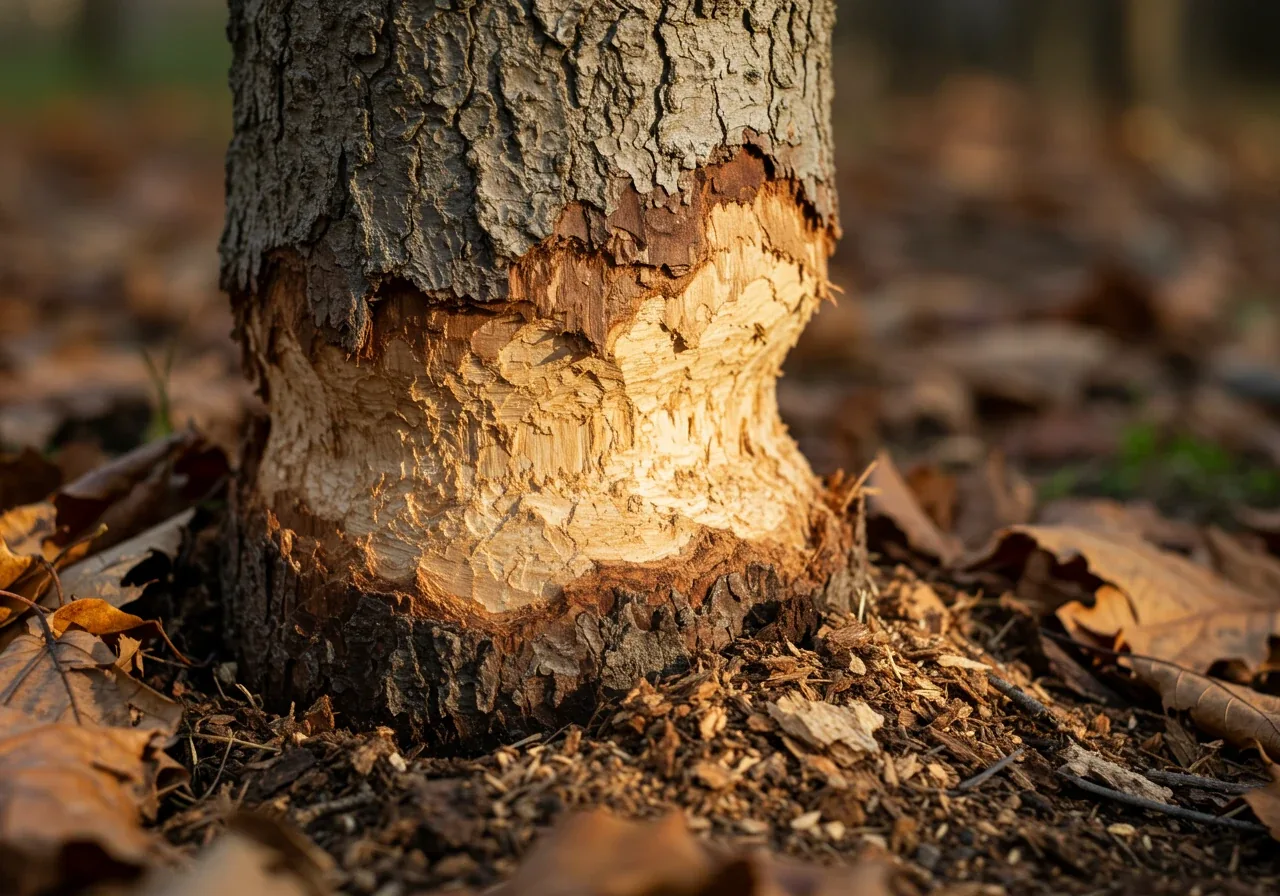
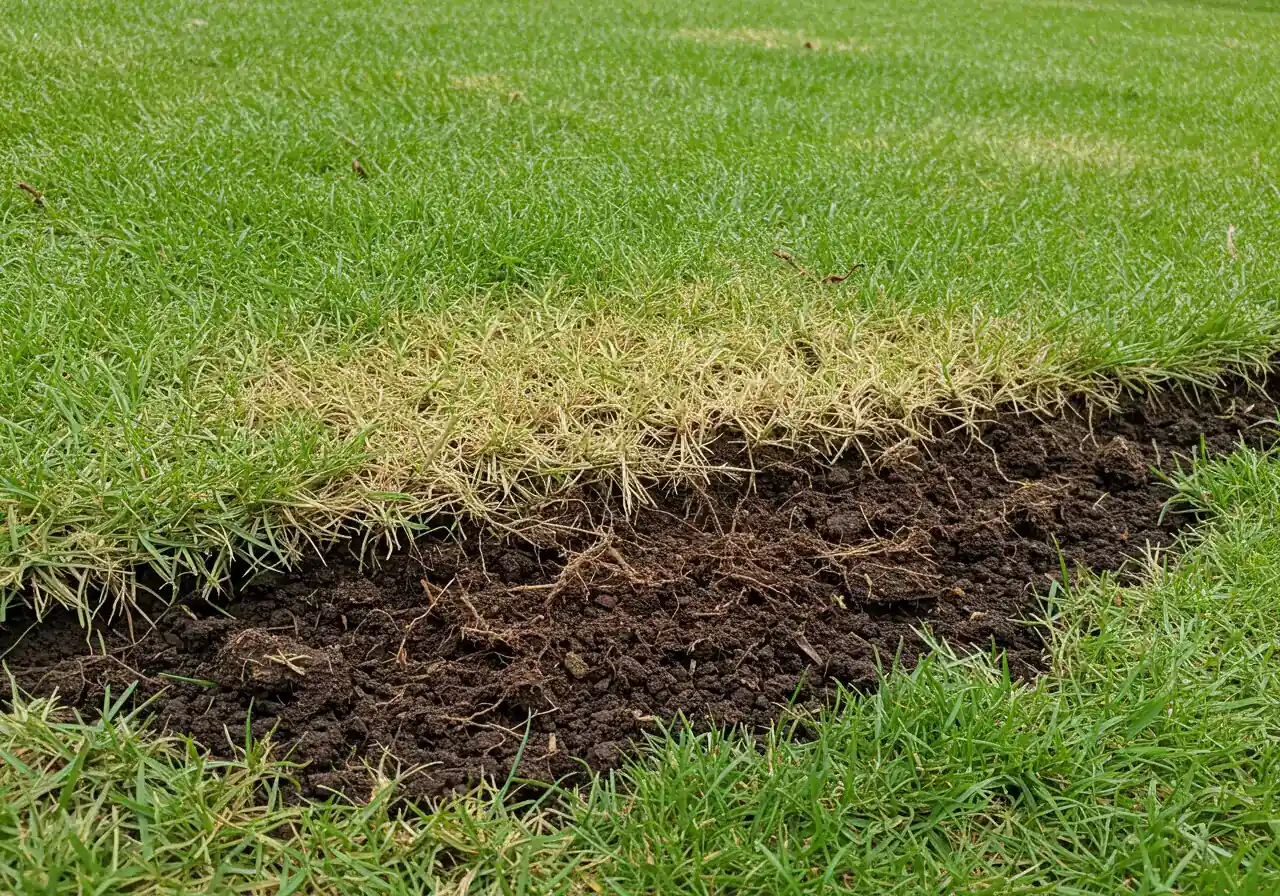
Alright, let's put on our detective hats and figure out who exactly has been making a mess in your Embrun garden this fall. Identifying the culprit is the first step to fixing the damage and preventing a repeat performance next year! These pesky critters are common guests in yards across Ottawa, from Greely to Nepean and right here in our neighbourhood.
Lawn Grubs (like June Bug Larvae)
These C-shaped, white worms live just below the soil surface. Damage: If you're seeing patches of your lawn turning brown and feeling spongy, or if critters like raccoons and skunks are suddenly digging up your turf like buried treasure, grubs are likely the cause. They feast on grass roots, killing the grass from below. Dealing with the aftermath often involves repairing the turf; improving the importance of soil health through lawn aeration can make your lawn less attractive to them over time. Fixing severe damage might even require overseeding your lawn to bring back thicker grass.
Voles & Mice
These small rodents become more noticeable as weather cools and they look for food and shelter near homes. Damage: Voles create shallow, winding tunnels or "runways" across the lawn surface, often visible after snow melts but sometimes noticeable in fall. Both voles and mice can gnaw on the bark of young trees and shrubs near the ground level, potentially girdling and killing them over winter. This kind of damage can really impact the look of your landscaping. Consider protecting trunks with guards, especially before winter.
Rabbits
Yes, even cute bunnies can be a nuisance! Especially as other food sources disappear. Damage: Rabbits leave clean, angled cuts on plant stems (unlike the ragged tearing from deer). They particularly love munching on woody plants and shrubs during fall and winter, sometimes stripping bark near the base. If rabbits are a recurring issue, you might explore spring strategies like choosing rabbit-resistant plants for garden protection. Fall cleanup might involve trimming away damaged stems, similar to how you might control plant size with spring pruning, but focused on removing the damage.
Slugs & Snails
These slimy characters love cool, damp fall weather. Damage: They leave behind silvery slime trails and chew irregular holes in the leaves of hostas, lettuce, and other tender plants. Thorough fall cleanup of leaf litter reduces their hiding places.
Seeing this kind of damage can be discouraging after a season of gardening effort. Sometimes, the best course of action is a thorough fall tidying. If the pest party got a bit out of hand, consider professional help; our general landscaping services include getting your yard back in shape. For focused tidying, especially after pest invasions, an Embrun yard cleanup service can make a huge difference before winter arrives.
Hypothetical Pest Activity Levels (Late Summer/Fall)
Different pests are more active at different times. Here's a simple visualization:
Damage Control: Assessing Your Garden & Rolling Up Your Sleeves for Fall Cleanup
Okay, deep breaths! So, the uninvited guests left a bit of a mess in your Barrhaven or Osgoode garden. It happens to the best of us across Ottawa! Don't let it get you down. Think of this fall gardening phase as damage control and setting the stage for a spectacular comeback next spring. It’s time to grab your gloves, maybe a warm beverage, and do a little detective work followed by some therapeutic cleanup.
First, let's assess the situation. Take a slow walk around your entire property. Look closely – are leaves just ragged, or completely skeletonized? Are stems chewed down low near the ground (hello, rabbits and voles!) or higher up? Gently tug on those brown patches in your lawn – do they lift easily like a carpet? That's a classic sign of grub damage. Check the base of your young trees and shrubs for any gnawed bark. Make a mental note (or even a real one!) of the problem areas. Knowing *what* and *where* the damage is helps focus your cleanup efforts.
Now, let's roll up those sleeves! Fall cleanup isn't just about making things look tidy; it's crucial pest control.
- Clear the Clutter: Rake up fallen leaves, spent flowers, and dead plant debris thoroughly. Many pests and diseases love to overwinter in this stuff. Getting rid of it disrupts their cozy winter plans. This is a key part of any good Embrun yard cleanup service.
- Prune the Pain: Trim away any branches or stems that pests have clearly damaged or broken. Make clean cuts to help the plant heal.
- Evict the Sick: If plants are *really* badly damaged or diseased, sometimes it's best to remove them completely. Don't compost this material – bag it up for municipal waste pickup to avoid spreading problems. This level of detail is something we focus on in our general Ottawa property cleanup service.
- Tend the Turf: Rake your lawn well to remove thatch build-up where pests can hide. If grubs did a number on it, fall is also a time to consider core aeration to help the soil breathe – especially important in our local clay soils – and maybe overseeding damaged patches.
- Protect the Vulnerable: Consider wrapping the trunks of young trees or susceptible shrubs with tree guards to prevent winter gnawing.
All this tidying directly impacts next year's pest populations by removing their food sources and winter hiding spots. It also preps your garden beds for winter, allowing moisture to reach the soil properly and reducing soggy spots where problems can fester. Whether you tackle it yourself or seek assistance, like the dedicated city garden clean up service options available, getting it done is key. If you're in nearby areas, similar help is available, such as a focused Marionville yard cleanup service. Tackling the whole property, including non-garden areas, might fall under a broader Marionville property cleanup service.
Doing this work now pays off big time come spring. A clean slate means fewer pests and healthier plants ready to burst forth. Feeling overwhelmed by the scale of the cleanup? That's okay too! Sometimes calling in the pros is the best way to get your landscaping back on track. You can learn more about us and how we help homeowners reclaim their yards after a tough season. Check out our Google My Business page for reviews and updates.
The Fix-It Plan: Step-by-Step Fall Repairs for Pest-Weary Plants & Lawns
Okay, let's dive into the "Fix-It Plan"! Pests might have had their fun, but fall is our chance to play doctor for your garden and lawn. Think of it as a little TLC session before everything tucks in for the winter here in Ottawa. We'll get things patched up, looking better, and ready for a strong comeback next spring, whether you're tending a yard in Manotick or right here with us.
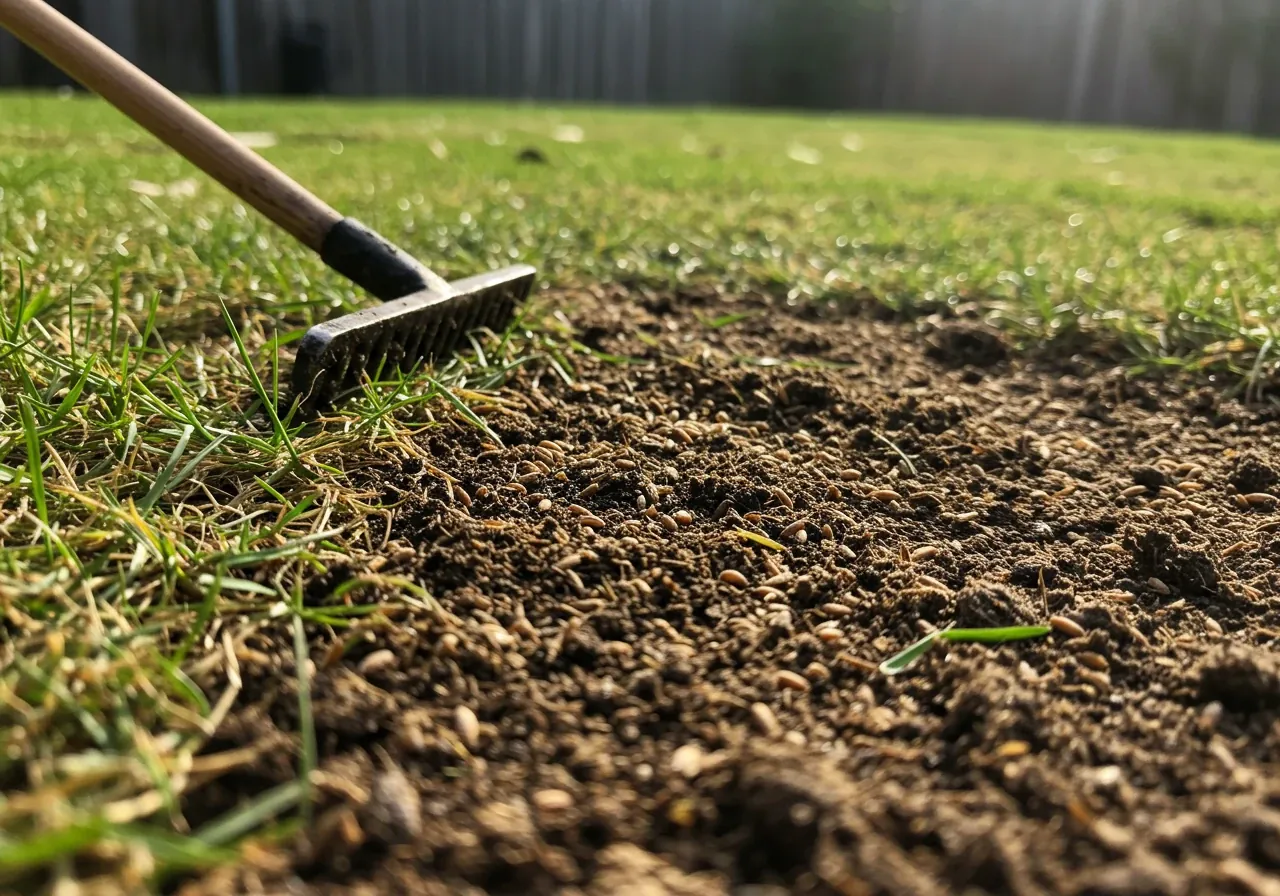
Step 1: Triage for Trees, Shrubs & Perennials
Your woody plants and perennial flowers often bear the brunt of chewing critters. Here’s how to help them heal:
- Prune with Purpose: Grab sharp, clean pruning shears. Snip off any clearly dead, broken, or heavily chewed branches and stems. Cut back to just above a healthy bud or side stem. This removes damaged tissue and encourages healthy regrowth next year. Don't go wild – just remove the obvious casualties. Think of it as a neat haircut, not a buzz cut!
- Bark Bites: If voles or rabbits gnawed bark at the base of young trees or shrubs, assess the damage. If it goes less than halfway around the trunk, the plant *might* recover. Clean the area gently. If the damage circles the entire trunk (girdling), the plant likely won't survive. Removing it now prevents it from becoming a disease haven. Need help assessing? Our garden maintenance team can assist.
- Leaf Litter Cleanup: Rake *thoroughly* around the base of affected plants. Pests and disease spores love to overwinter in fallen leaves. Removing their cozy blanket is a great eco-friendly pest control step. This detailed cleanup is essential, the kind of work included in a Metcalfe garden clean up service if you need a hand.
Step 2: Lawn CPR (Critter Patch Repair!)
Lawns often show grub damage (brown, spongy patches) or vole runways. Let's mend the turf:
How-To Box: Patching Pest-Damaged Lawn Spots
- Rake It Out: Gently rake the dead, brown patches to remove the loose, dead grass. If you have vole tunnels, lightly tamp them down or fill shallow ones with soil.
- Aerate (Optional but Awesome): If your soil is compacted (common in areas with clay, like parts of Kars), fall aeration helps air, water, and nutrients reach the roots. This strengthens the surviving grass.
- Amend & Top Dress: Spread a thin layer (about 1/4 inch) of good quality compost or lawn topsoil over the damaged areas. This improves the soil structure and provides nutrients. Choosing quality inputs matters; we discuss this in our guide to smart material selection.
- Overseed: Select a grass seed blend suitable for Ottawa's climate and your lawn's sun exposure. Spread the seed evenly over the prepared bare patches according to the package directions. Rake it in *very lightly* to ensure good seed-to-soil contact.
- Water Wisely: Keep the newly seeded areas consistently moist (but not soggy) until the grass establishes. A light watering once or twice a day might be needed if it doesn't rain. Consistent follow-through is key for success, forming the foundation of good lawn care practices.
Severe Damage?: For large areas destroyed by pests, simple overseeding might not be enough. Sometimes, starting fresh with professional sod installation provides the quickest and most uniform fix for a truly devastated lawn.
Step 3: Vegetable Bed Rehab
Even if your harvest is done, prepping the veggie patch now helps prevent future pest problems:
- Clear the Debris: Remove *all* dead plant matter, including roots if possible. Pests like squash bugs or diseases like blight can overwinter on old plant material. Don't compost heavily infested plants – bag them for trash.
- Amend the Soil: Pests often thrive in stressed conditions. Enrich your soil by adding a layer of compost or well-rotted manure. Gently turn it into the top few inches. Healthy soil grows healthy, more pest-resistant plants. Our local soils, whether sandy near parts of Richmond or heavier clay elsewhere, always benefit from organic matter. Our soil preparation services can help.
- Consider Cover Crops: Planting a fall cover crop like oats or rye can prevent soil erosion, suppress weeds, and add nutrients when tilled in next spring. It’s a great eco-friendly step recommended by resources like the Ontario Ministry of Agriculture, Food and Rural Affairs (OMAFRA).
Tackling these repairs might seem like a bit of work, but it's incredibly rewarding. You're actively helping your landscape recover and setting it up for success. If the task list feels daunting, remember that professional help is available. You can learn more about us and the services we offer to get yards back into shape. Deciding between DIY and hiring pros involves considering time, cost, and results – hiring help usually comes with service agreements, so glancing at things like terms and conditions is part of the process to understand the scope of work. Now, go give your plants the boost they need!
Fortifying Your Defenses: Smart Fall Prep for a Pest-Resistant Spring Garden
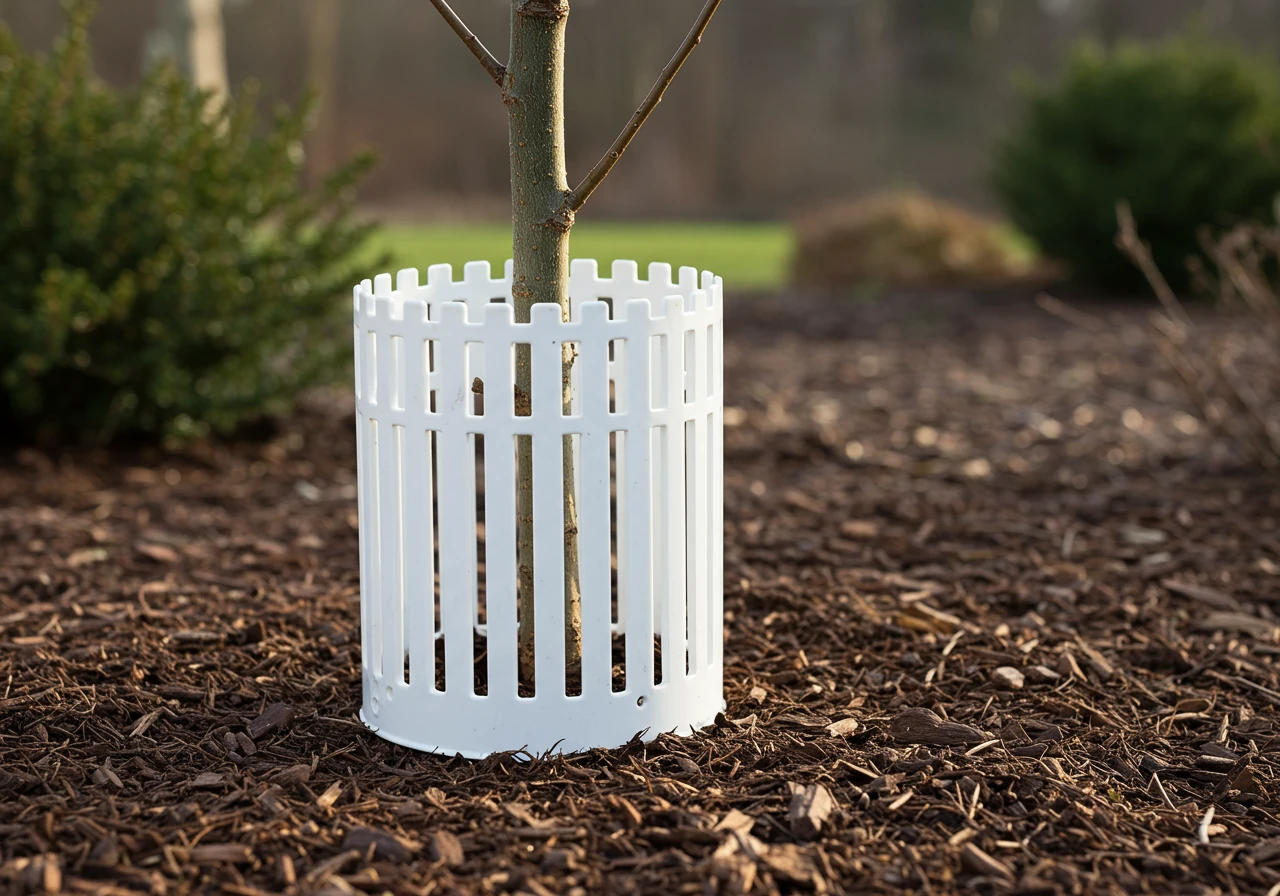
Okay, team garden! We've tackled the immediate pest aftermath, patched things up, and maybe shed a *tiny* tear for that prize-winning zucchini the voles claimed. Now, let's switch gears from defense to *offense* – or maybe just really smart defense – for next spring! Fall isn't just about tidying up; it's the golden opportunity to set up your Ottawa garden, whether in Manotick or surrounding areas, to be less of a pest magnet when things warm up again. Think of it as building a garden fortress, but friendlier.
So, how do we make our yards less inviting to those party-crashing critters next year? Here are some proactive steps you can take *now*:
- Build Barriers (Literally!): Winter is prime time for hungry rabbits and voles looking for a snack. Protect the trunks of young trees and vulnerable shrubs by installing plastic tree guards or wrapping them with hardware cloth (wire mesh). Ensure it goes slightly below the soil line to deter burrowers and high enough to be above expected snow levels. Check your fences too – are there any bunny-sized gaps that need mending before winter hits? Learn more about protecting trees from the City of Ottawa's Urban Forest Management resources.
- Boost Your Soil's Superpowers: We keep saying it because it's true: healthy soil grows healthy plants! And healthy plants are naturally better at resisting pests and diseases. Fall is the *perfect* time to amend your garden beds with compost or well-rotted manure. Gently work it into the top few inches. This improves drainage, adds nutrients, and gives your plants a head start next spring. Strong plants are like garden superheroes – less likely to succumb to villains! Need compost? Consider our material selection options.
- Strategic Cleanup (Leave a Little Hospitality for the Good Guys): Yes, we emphasized clearing debris where pests hide. But! You can be strategic. Rake leaves *off* lawns and *away* from vulnerable plant crowns. However, leaving some leaves undisturbed in a back corner or under sturdy shrubs can provide vital overwintering habitat for beneficial insects like ladybugs and lacewings – nature's pest control! Also, leaving sturdy perennial stalks (like coneflowers) standing can offer shelter. It's a balance – remove the bad guys' condos, but leave a few B&Bs for the good guys. If the cleanup feels overwhelming, remember professional help exists. Services like a dedicated Metcalf yard cleanup service can handle the heavy lifting, ensuring the *right* stuff gets cleared. Sometimes a more comprehensive approach covering the entire property is needed, like a Metcalf property cleanup service.
- Plan for Pest-Resistant Planting: While you won't plant them now, use the fall lull to research plant varieties known for pest resistance that suit our Ottawa climate. Making informed choices next spring can significantly reduce future battles. Maybe plan your next garden installation with resilience in mind!
- Consider Eco-Friendly Treatments (Plan Ahead): For specific recurring issues, like scale insects on fruit trees, late fall or early spring might be the time for dormant oil sprays (always follow label directions!). If lawn grubs were a nightmare, research beneficial nematodes and note the application window (usually late summer/early fall when soil is warm). Planning now means you're ready when the time is right. Find info on invasive species from the Ontario Invasive Plant Council.
- Don't Forget the Whole Yard: Pests don't just live in garden beds. A thorough cleanup across your entire property reduces potential hiding spots. This might involve clearing brush piles or tidying neglected corners – the kind of work often included in a city yard cleanup service or area-specific options like a Marionville garden clean up service. Need a full property clean up? We can help.
Putting in this effort now truly pays dividends. You're not just cleaning; you're actively reducing next year's pest pressure. It might feel like extra gardening chores, but think of the future frustration you're saving yourself!
Fall Pest-Prep Checklist
- Install Tree Guards on young/vulnerable trees & shrubs.
- Amend garden bed soil with compost or manure.
- Perform strategic leaf cleanup (remove from lawn/crowns, leave some for beneficials).
- Research pest-resistant plants for next spring.
- Note any needed dormant season treatments (e.g., dormant oil).
- Tidy up entire property, removing potential pest habitats.
- Check and repair fences for animal access points.
Feeling motivated but maybe a bit short on time or energy? That's totally understandable. Getting professional help to whip your yard into shape before winter can be a huge relief. If you have questions about tackling specific pest prep tasks or want to discuss cleanup options, feel free to contact us. We’re happy to chat! Just like any service, it's always good to understand what's involved; you can usually find details in the company's terms and conditions. Here's to a less pesty spring!
Embrun Gardener's Cheat Sheet: Top Fall Pest Recovery Tips
Okay, gardeners of Embrun and beyond! Feeling a bit overwhelmed after battling those garden party crashers? No worries! Here's your quick cheat sheet – the top 3-5 things you absolutely *should* do this fall to help your landscaping recover and build resilience for next spring. Think of it as your garden's comeback plan!
Embrun Gardener's Cheat Sheet: Top Fall Pest Recovery Tips
- Clean Up Like a Pro: Seriously, rake up *all* that fallen debris, dead plants, and old mulch where pests and diseases love to hide over winter. Don't compost heavily infested material! A thorough cleanup is your first line of defense. If the job's too big, remember help is available, including options like a thorough yard cleanup service available in Metcalfe and other nearby areas like Ottawa or Marionville.
- Repair the Damage Now: Don't wait until spring! Prune broken or chewed stems on shrubs and perennials. For lawns, rake out dead patches, top dress with compost, and overseed bare spots caused by grubs or voles. Give your plants and lawn a chance to start healing before the deep freeze.
- Protect Vulnerable Plants: Wrap the trunks of young trees and susceptible shrubs with tree guards or hardware cloth *before* snow flies. This stops rabbits and voles from gnawing bark when food gets scarce. Consider applying a fresh layer of mulch to protect roots, using proper mulching and edging techniques to avoid smothering crowns.
- Boost Your Soil: Healthy soil = tougher plants! Amend garden beds by gently working in compost or well-rotted manure. This improves soil structure and gives your plants the nutrients they need to bounce back strong next year, making them less attractive targets for pests. Quality soil preparation is key.
- Plan Your Defense: Use the fall downtime to research pest-resistant plant varieties suitable for our Embrun climate for next spring's gardening plans. Note down reminders for any specific dormant season treatments (like dormant oil) if needed. When considering professional help for bigger projects or ongoing care, it's wise to review their approach, including their commitment to safeguarding client details, often outlined in their Privacy Policy.
Tackling these steps now makes a *huge* difference. Seeing the results of dedicated fall care is incredibly rewarding. You can view some inspiring garden transformations on our site – it’s almost like the rejuvenated gardens are sending a big thank you for the effort! You've got this!
FAQs: Your Embrun & Ottawa Fall Pest Recovery Questions Answered
Great question! Ideally, you want to get that cleanup done *before* the ground freezes solid or we get buried under heavy snow here in the Ottawa region. Aim for mid-to-late fall, after most leaves have fallen but while the weather still allows for comfortable gardening. A timely cleanup removes overwintering spots for pests. If time gets away from you, consider a comprehensive Ottawa yard cleanup service to get it done efficiently.
Don't despair! Fall is actually a decent time for lawn repair. Rake away the dead stuff, loosen the soil slightly, top dress with good compost or soil, and overseed the patches. Keep the seeds moist until they sprout. Improving the underlying earth through good soil preparation makes your lawn tougher next year. For really extensive damage, sometimes a full fall restoration by professionals is the quickest route back to green; tackling the entire property might fall under a city property cleanup service.
If you do only one thing, make it removing diseased plant material and heavily infested debris. Things like blighted tomato plants or leaves covered in mildew are basically pest hotels over winter. Bag this stuff for municipal pickup, don't compost it! A thorough Ottawa garden clean up service always prioritizes removing these problem sources to protect your future landscaping efforts.
Generally, cosmetic pesticide use on lawns and gardens is restricted in Ottawa and surrounding municipalities like Embrun due to provincial regulations. The focus is on prevention and eco-friendly methods like manual removal, barriers (like tree guards), attracting beneficial insects, and building healthy soil. Always check your local municipal bylaws for specifics, but usually, fall cleanup and physical controls are your go-to options. Reputable resources include the City of Ottawa Pesticide Information page and advice from groups like the Master Gardeners of Ottawa-Carleton.
Oh, those pesky tunnellers! Gently tamp down the tunnels to discourage more activity. Remove any plants they've clearly killed by chewing the roots or crown. Adding a layer of compost can help improve the soil structure for spring. Consider wrapping the base of vulnerable shrubs nearby. Consistent care helps plants recover; think about ongoing support like a city garden maintenance service next season to keep things thriving. Perhaps a quick estimate can help plan for next year?
Conclusion: Tucking Your Garden In Clean & Setting Up a Stellar Spring
Well, there you have it! Dealing with the aftermath of a late-season pest party isn't the most fun part of gardening, but tackling it head-on this fall is your golden ticket to a healthier, happier, and less-munched-on spring garden. Think of this fall cleanup not just as tidying, but as strategic pest recovery – removing their winter hideouts, repairing the damage, and fortifying your landscaping defenses. It’s like giving your garden a spa day before its long winter nap! A little effort now really does save a *lot* of hassle (and heartache) come springtime. You're basically sending those pests an eviction notice *before* they get too comfy!
So, don't delay – put these tips into action and tuck your garden in right! Feeling motivated but maybe short on time? If you need a hand getting your yard ship-shape, remember that professional help is available. Our teams offer thorough fall cleanup and garden recovery services across Ottawa, including right here in Embrun and nearby areas like Metcalfe and Richmond. Whether it's a city garden clean up or a larger Marionville property cleanup, we're ready to help you set the stage for a fantastic spring! What are *your* biggest fall garden recovery challenges or successes?
